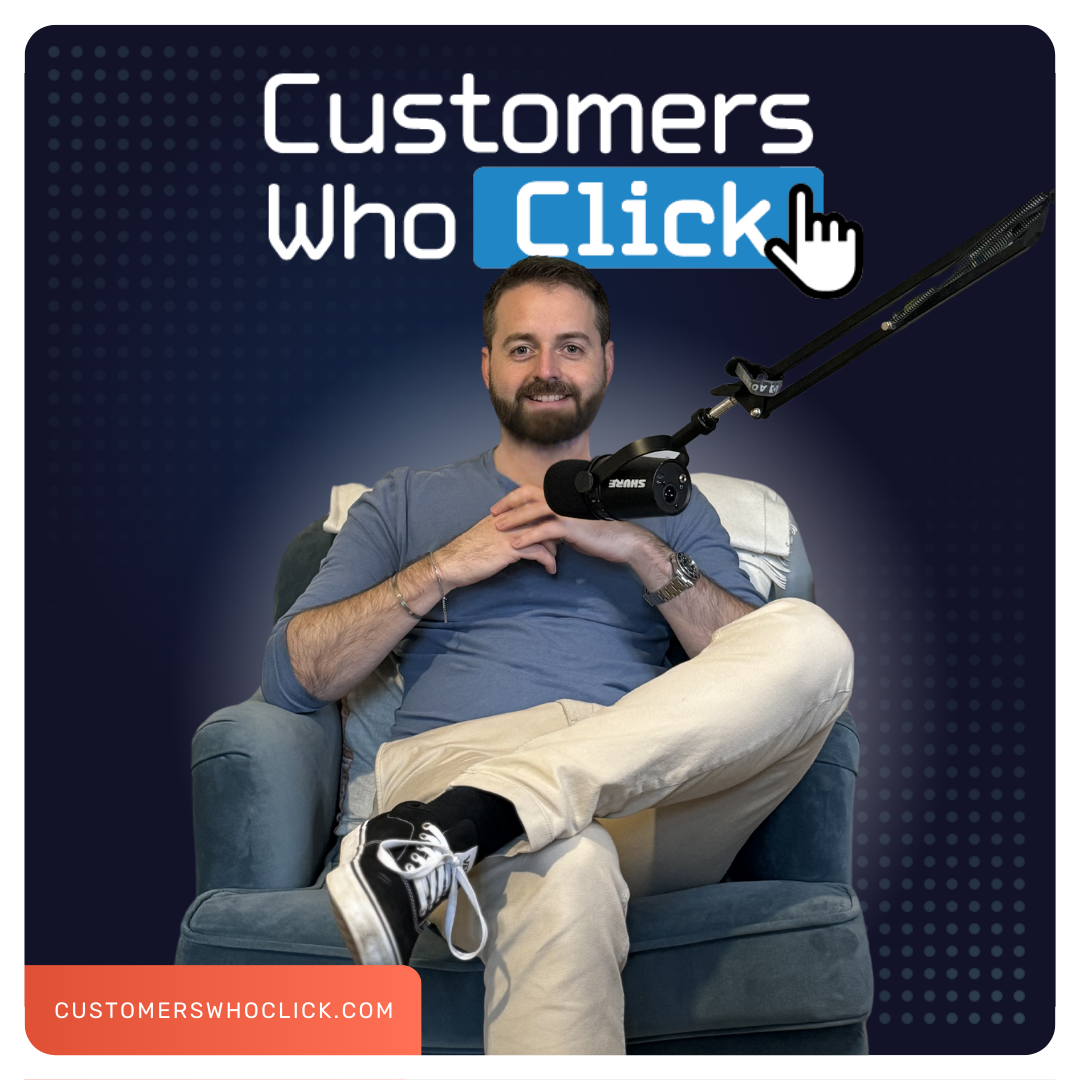Making Money with Shoppable Live Streaming
July 12, 2022

If you're in ecommerce download your free podcast bonuses here: https://tinyurl.com/523dxtyx
In episode 1119 of the Customers Who Click podcast I spoke with Sarah Williams, an on-air host and producer. She specialises in shoppable live streaming, helping brands sell using engaging video content that also engages their community at the same time.
The money that gets made through shoppable live streaming in the east is just, it's insanity.
It can be a bit tough to get into shoppable live streaming, and really make it work for your business. But if you get it right, the rewards it will reap will be amazing. This can work for any business that has products that either require a bit of an explanation, or benefit from demos and tutorials.
Fashion might be a bit more difficult, but anything skincare, jewellery, beauty is great. Even electronics, computing, home appliances, cooking, maybe food…as long as you can create content showing off your products and talking about them without talking unnecessarily.
Sarah is an on-air host and producer, you can connect with her on LinkedIn or head over to her website,
Jeremy is the Chief Growth Office of ConversionAdvocates, a CRO agency specialising in turning data into business intelligence. Jeremy has been running CRO programs for over 14 years. You can connect with him on LinkedIn or head over to https://sarahwilliams.tv/
Key highlights:
01:05 - 10:11 - Why Shoppable Live Streaming? - The money being made in Asia through shoppable live streaming is insane, really insane amounts. While that might not translate across to the West, the fact that Amazon is doing it, there’s QVC, and Sarah is having great success should tell you there’s an opportunity here.
Maybe during covid and lockdown was a better time to start as shops were closed so consumers were forced to shop online, but for those brands purely online, a shoppable live stream allows you to connect with consumers, and give them a good in-store experience, online. While you can’t touch the products yourself, the consumer gets the ability to ask very specific questions to the expert, ask their opinion on it and get a far more detailed response than a quick text description.
10:20 - 17:11 - What are the Challenges with Shoppable Live Streams? - It can get overwhelming. The examples you see of it are super high production value. The likes of Amazon or QVC for example. They’ve got multiple cameras, directors, producers, professional lighting, audio etc. But really, you can do it on a phone. Most social platforms offer the function, you’ve got live stream functions via tools such as Restream.
But outside of the technical stuff, you’ve also got to decide what the point is going to be. Is it going to be a sales channel for you, is it a community engagement piece? Whats the strategy, and are you going to commit to it?
17:40 - 23:33 - How does Shoppable Live Streaming Differ from UGC? - Ideally, if youre going to connect with your audience and your consumers, you should know the brand insight and out, you should have expert level knowledge of your products. Its OK to request some information during the stream if you can’t answer something, but really you should know everything. If you use an influencer, you need to be aware that they’re not going to engage your audience so much, because they don’t know how to.
23:44 - 27:43 - Top Tips for Shoppable Live Streams - Dive in, give it a go. Send an email out to your list or post it on social announcing that youre doing it, and that will commit you to giving it a go. If you have a founder that can do it thats perfect, otherwise you can use a sales rep, product developer, anyone really who has really good knowledge of the brand and products, and is comfortable doing a stream. Something that I think makes it slightly easier is that there will be a chat function there, so you do feel you’re speaking to people, rather than just at a screen hoping someone is watching.
Your streams should ideally drive sales, engage the community, create content for you, and provide education to your audience.
27:52 - 42:40 - Big Mistakes to Avoid - Getting a celebrity or influencer to do the stream. It sounds fun, it sounds like it’ll draw the audience in, but then they won’t be able to engage them so well. You need to at least pair them with someone from the brand. Another mistakes is not committing to it properly. Once a month wont get you anywhere. You need to do at least once per week for 6 months to build the program, develop and optimise it. You need to learn what your audience likes, what themes work, what content they want.
42:41 - 50:55 - How to Constantly Improve? - Having a feedback loop is essential, both from your team and your audience. Make your own notes, you’ll know a few things happened that you liked or didnt like. Consider getting a coach to help you with your style, the way you present, and of course, keep ontop of the sector. Make sure you know what consumers want, how they want to engage, and the types of content that are working.
51:08 - Who Would Sarah Like to Take For Lunch in the D2C Marketing World?
Some of the producers and programmers at QVC, whats their secret sauce?
51:58 - Sarah’s Must-Have Tools:
- A simple LED light works better than a ring light for her
- A tripod for your camera
- Potentially broadcast software if you’re using a DSLR
If you’d like to hear more from Sarah, you can connect with her on LinkedIn or head over to https://sarahwilliams.tv/